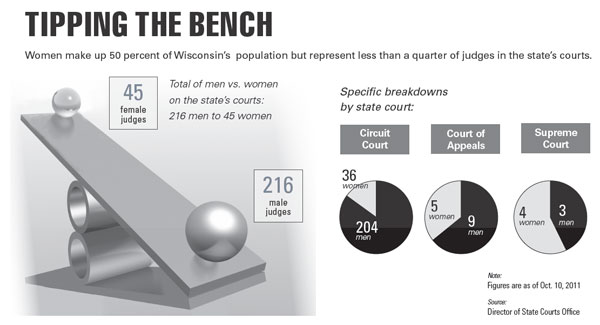Uneven justice: Numbers don’t add up for women on the bench
By: Caley Clinton, [email protected]//October 24, 2011//
Uneven justice: Numbers don’t add up for women on the bench
By: Caley Clinton, [email protected]//October 24, 2011//
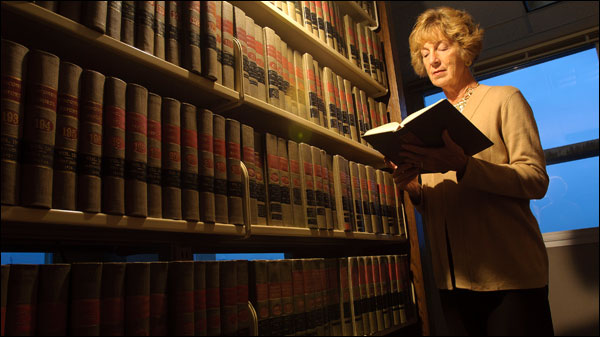
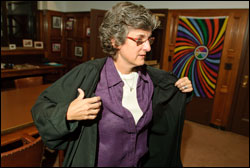
Teri Jendusa Nicolai did not care about the judge’s gender when she sought a restraining order against her ex-husband in 2004.
She just wanted protection from the man who two months later would beat her with a baseball bat, stuff her in a garbage can and leave her for dead in a freezing Illinois storage unit.
She got the order, but it didn’t come as easily as she expected it would, Nicolai said. That’s when her perception of the Racine County judge handling her request changed, she said.
She had a track record of restraining orders against her ex-husband and a well-documented history of abuse at his hands in police reports, Nicolai said. But still, she said, she had to fill out more paperwork and answer more questions from this judge than for past order requests.
“Maybe,” Nicolai said, “he didn’t quite understand the whole cycle of domestic violence.”
It’s the “maybe” that should give judges pause, Milwaukee County Circuit Court Judge Richard Sankovitz said. The perception that a judge’s gender could influence his or her decisions is as much a threat to a court’s integrity as actual bias, he said.
It’s not that certain genders should try certain cases, Sankovitz said, but rather that people appearing in court want to see equal representation on the bench.
“If they see all judges of one kind, there’s sometimes an apprehension that the judge is too unlike the litigants,” he said. “So diversity helps us in that people feel welcome in our courts and feel like they’ll be heard.”
But in Wisconsin, where 50 percent of the state’s population is female, only 17 percent of judges — in circuit, appeals and the Supreme Court — are women.
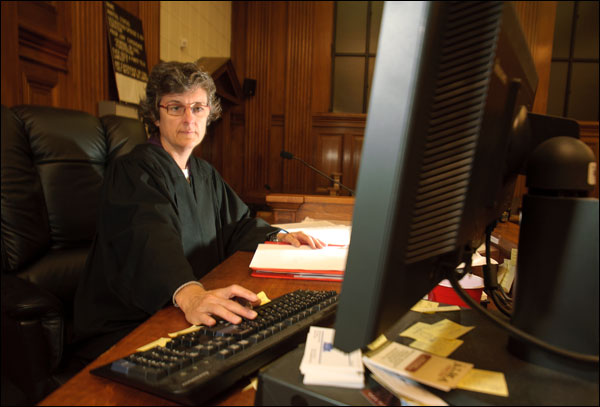
That disparity works against judges’ efforts to provide people a fair and balanced court, Milwaukee County Circuit Court Judge Mary Triggiano said.
“Appearances are everything sometimes,” she said. “Even though someone might come in and be in front of judge of a different gender or skin color, if they’re in the system, it seems more fair.”
Judges are people, after all, Sankovitz said, and draw from their experiences based on gender, race, age and a variety of other factors when deciding cases.
“While we can’t get the perfect judge for every case,” he said, “you try to get the judges that increase your odds of having the best for each case, and that calls for more diversity.”
Although lawyers and judges across the state say it’s rare, there are some instances when men and women judge differently, Sankovitz said.
Although it varies, he said, female judges are more likely to be patient, listen and work in a collaborative way. He said domestic violence cases, restraining order requests and child custody disputes, in particular, were areas in which those differences could come into play.
Triggiano said she believed her experiences as a mother, for example, made her a better judge because she’s become more patient and better understands how to seek balance after raising a child.
“You can’t erase years and years of experience,” she said. “You just have to use it wisely and have to keep that goal of fairness in mind.”
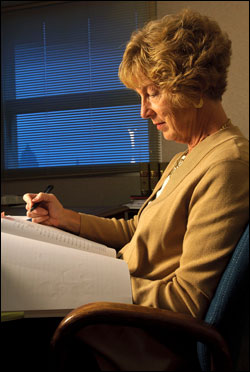
Diversity of backgrounds and experiences enriches the courts’ decisions and the public’s perception of equality, Wisconsin Court of Appeals Judge Kitty Brennan said.
“You want the public’s perception of justice to be positive,” she said. “That comes from seeing people like themselves on the bench.
“They like to feel invested in their third branch of government.”
The number of female judges in Wisconsin has increased 4 percent in the past decade, according to figures from the Director of State Courts Office, but still is disproportionate to the number of female attorneys and law students in state.
Women account for 40 percent of the 2011 entering class at the University of Wisconsin Law School and 39 percent at Marquette University Law School, according to figures from both schools. As of February 2011, the most recent data available from the State Bar of Wisconsin, women accounted for 32.45 percent of the lawyers in Wisconsin.
“We should be able to find more than 17 percent of eligible people to be named to the bench,” Milwaukee County Circuit Court Judge Dennis Cimpl said. “More than 17 percent of members of the bar are competent female lawyers.
“What I want are competent lawyers to be judges, regardless of their gender, race or sexual orientation.”
Amy Matsui, senior counsel at the National Women’s Law Center in Washington, said although the number of women enrolled in law schools dramatically has increased in the past 40 years, her organization still struggles to recruit women to the judiciary.
“It’s not an easy process, particularly at the federal level,” Matsui said. “Nominees lives get picked apart, and not everyone wants to be subjected to that.”
The organization is pushing for more female judges, she said, to increase the odds that anyone who comes into the court will feel fairly represented.
“If you are coming in as a woman or a person of color and the bench looks nothing like you,” Matsui said, “your confidence of getting a fair hearing may be lowered.”
Although nationwide figures show greater female representation — women account for 25 percent of judges in state courts across the country, according to data from The American Bench’s 2011 Gender Diversity Survey — the number still is disproportionate to the country’s 50 percent female population.
“I don’t think I’m any different as a judge because I’m a woman,” Brennan said. “But my life experiences are certainly different than any man I know, which is why you need to have some age to be a good judge. More experience to draw from.”
Still, looking back on her experience, Nicolai said, it’s hard to say whether a female judge would have made her restraining order request any easier.
“But really, it shouldn’t matter if you’re a male or female,” she said, “as long as you’re a good judge.”
State groups mobilize to encourage women
The number of women judges at Wisconsin courts has increased 4 percent in the past 10 years, but there still is work to be done to increase that percentage at a faster rate, said Natalie Remington, president of the Milwaukee-based Association for Women Lawyers.
“With a bunch of judges retiring or looking to retire,” she said, “it’s a good time for women to make a move.”
Members of the state judiciary, including Milwaukee County Circuit Court Judge Mary Triggiano, recently approached AWL, Remington said, about organizing a support effort for women considering judicial positions in Wisconsin. The group plans to host a discussion in February, she said, and is looking at partnering with other women’s groups in state to provide guidance and encouragement for women considering a judicial position.
“To have actual judges want to sit down with you,” she said, “and talk about how to become a judge and provide guidance to other women, I think it’s just what we need.”
Triggiano said she wanted to offer other women support such as she had on her path to becoming a judge.
“It’s doable, but it feels daunting at first with all other responsibilities,” she said. “But it’s rewarding.”
Legal News
- State Bar leaders remain deeply divided over special purpose trust
- Former Wisconsin college chancellor fired over porn career is fighting to keep his faculty post
- Pecker says he pledged to be Trump campaign’s ‘eyes and ears’ during 2016 race
- A conservative quest to limit diversity programs gains momentum in states
- Wisconsin prison inmate pleads not guilty to killing cellmate
- Waukesha man sentenced to 30 years for Sex Trafficking
- 12-year-old shot in Milwaukee Wednesday with ‘serious injuries’
- Milwaukee man convicted of laundering proceeds of business email compromise fraud schemes
- Giuliani, Meadows among 18 indicted in Arizona fake electors case
- Some State Bar diversity participants walk away from program
- Wisconsin court issues arrest warrant ‘in error’ for Minocqua Brewing owner
- Iranian nationals charged cyber campaign targeting U.S. Companies
WLJ People
- Power 30 Personal Injury Attorneys – Russell Nicolet
- Power 30 Personal Injury Attorneys – Benjamin Nicolet
- Power 30 Personal Injury Attorneys – Dustin T. Woehl
- Power 30 Personal Injury Attorneys – Katherine Metzger
- Power 30 Personal Injury Attorneys – Joseph Ryan
- Power 30 Personal Injury Attorneys – James M. Ryan
- Power 30 Personal Injury Attorneys – Dana Wachs
- Power 30 Personal Injury Attorneys – Mark L. Thomsen
- Power 30 Personal Injury Attorneys – Matthew Lein
- Power 30 Personal Injury Attorneys – Jeffrey A. Pitman
- Power 30 Personal Injury Attorneys – William Pemberton
- Power 30 Personal Injury Attorneys – Howard S. Sicula





